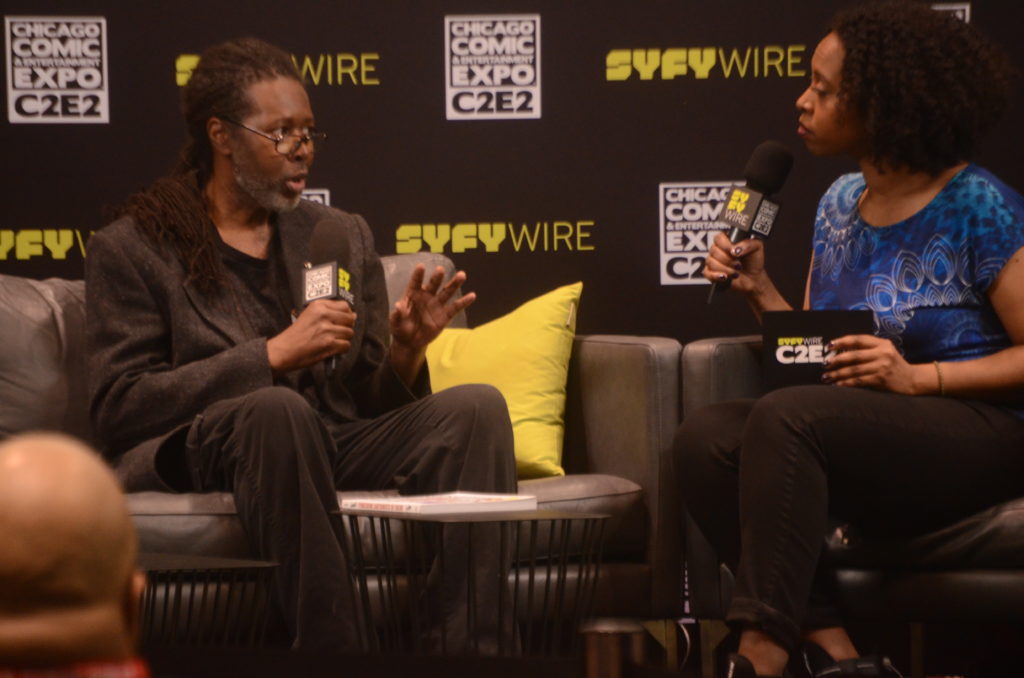The Chicago Comics and Entertainment Expo (C2E2) is in full swing in Chicago at McCormick Place, with its first full day of panels and exhibitions welcoming locals and visitors alike. Late in the afternoon cartoonist, historian, and author Tim Jackson spoke on his work Pioneering Cartoonists of Color with Syfy Wire’s Karama Horne.
The Ohio native’s book provides a historical account of the black men and women who created editorial cartoons, illustrations, and 70-plus comic strips from the 1880’s to 1968.
“I was motivated by the lack of information available about Black cartoonists in other books about cartoonists,” Jackson said. “It became more important when I learned that there was going to be a celebration of 100 years of American cartoonists. I created a website about Black cartoonists and illustrators so it could not be said there was no information about African-American cartoonists.”
In an interview with Evanston Public Library, Jackson spoke more on the research needed for this work, especially how much time it took to gather and the wealth of work that remains unrecognized.
“I spent hours upon hours searching through microfilm and digital databases to glean whatever information there was to be found,” Jackson said. “My greatest source of comics and cartoons was the Vivian G. Harsh Collection in the Carter G. Woodson Library on 95th & Halsted. My greatest discovery was the sheer number of Black cartoonists there have been from the 1880s through 1968.”
Throughout the work, Jackson takes to task the narrative practices of not only cartoonists of the time, but the regular performance-going public.
“Borrowing from the already-popular image of the blackface minstrel, the grotesque, hopelessly buffoonish misrepresentation of people of African descent was over time further stylized until it lost all remnants of individuality and humanity,” Jackson said. “This image was fueled by the glossy blackface makeup used in the minstrel show, or minstrelsy, an American entertainment consisting of comic skits, variety acts, dancing, and music, performed by white people in blackface or, especially after the Civil War, black people in blackface.”
It was this social climate and the emphasis we find ourselves putting on chronicling cartooning practices that led Jackson to write the book, especially when he realized that otherwise this historical work wouldn’t be done.
“I was motivated by the lack of information available about Black cartoonists in other books about cartoonists,” Jackson said. “It became more important when I learned that there was going to be a celebration of 100 years of American cartoonists. I created a website about Black cartoonists and illustrators so it could not be said there was no information about African-American cartoonists.”
Tim Jackson is a nationally syndicated cartoonist and illustrator. His social commentary cartoons have appeared on the editorial pages of the Capital Outlook, Chicago Defender, Chicago Tribune, Cincinnati Herald, Dayton Defender, Northern Kentucky Herald newspapers and the magazine, Urban Life Northwest.
You can find our more about Tim Jackson and all of his work on his website here.








Be First to Comment